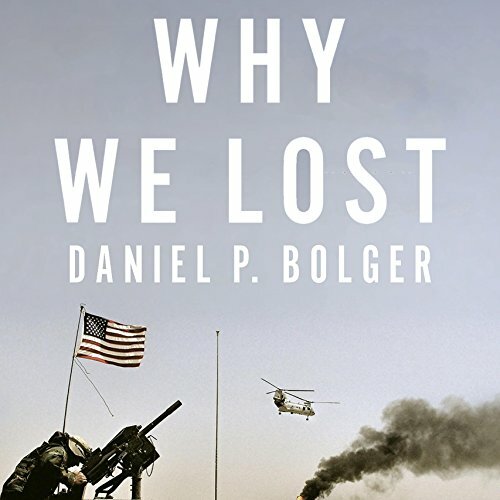Dan Bolger has been on my mind lately. You probably don’t know him. A quiet professional, he’s not a staple on cable news and only writes the occasional op-ed. In the faculty directory of NC State University, he is listed simply as an “Assistant Teaching Professor.”
I, and many others who served with him in uniform, know him for different reasons. When he commanded the 1st Cavalry Division in Iraq, we knew him as the guy who spent more time on the streets of Baghdad than he did in his office. He flew coach to that country, on the back of the airplane with the troops instead of up in first-class or his own private plane. He stayed with soldiers, ate with them, and did his personal hygiene standing right next to them.
As commander of the NATO Training Mission in Afghanistan and a Lieutenant General, it was more of the same. As they move around the battlefield, three-stars trail an entourage of straphangers nipping at their heels like exuberant puppies. Dan Bolger came alone and carried a rifle. His plain, direct language and manner of speaking stand in stark contrast to the Ivy-league legalese dominating much of our political, and military, leadership. A Soldier’s General, in another time, in another war, Dan Bolger would be as well known as George Patton.
Behind his gruff exterior is the precise mind of an academic. He’s written nine books on military history, and his latest, Why We Lost, details the failures that led to the US downfall of Afghanistan. The book was not haphazardly cobbled together in the last few weeks, nor is it the result of fortuitous timing.
Why We Lost is seven years old.
If you read the book in 2014 when it was published, the events of the last few weeks are — while tragic and triggering — no surprise. GEN Mark Milley may have been shocked by the collapse of Afghanistan in 11 days, but Dan Bolger wasn’t. “Way back in the autumn of 2001,” he writes, “a favorite quip acknowledged that you couldn’t buy Afghan loyalty, but you could rent it. Various tribal chiefs switched from the Taliban to the Northern Alliance after a display of US bombing prowess accompanied by the timely delivery of a few cases of cash.” At the beginning of their offensive some weeks ago, the Taliban had no air power (they do have some now), but they did have cash and something else even more critical: persistence.
Military Intelligence types, by doctrine, give the maneuver commander two guesses at what they think the enemy will do. The first is called the “most likely” course of action — what makes the most sense based on how the enemy is arrayed on the battlefield. The second is the “most dangerous” course of action — what can the enemy do to hurt us the most?
In Afghanistan, the Taliban’s assessment of our “most dangerous” course of action was this: “The enemy feared a long-term US commitment of troops on the ground, airpower overhead, and sustainment for the Kabul regime. If the United States agreed to keep them in place for decades, as in post-1953 Korea, as few as ten thousand Americans might have cracked the Taliban will to fight.”
We would never stay, and the Taliban would never leave. It is surprising, in retrospect, Afghan tribal chiefs ever supported us at all.
Two fundamental questions dominate Bolger’s narrative of Afghanistan.
Who is the enemy? And what is the mission?
To the average American, it may seem nonsensical that a senior three-star commander didn’t have the answer to either one of those questions well over a decade after 9/11. But it is well worth remembering now, after a frantic week of partisan blame-shifting by Democrats and Republicans, that seemingly everyone at different points in time had different answers.
Who was the enemy?
Were we fighting Al Qaeda? The Taliban? In the spring of 2002, Al Qaeda and the Taliban massed for perhaps the last time in the Shah-i-Kot Valley in eastern Afghanistan. They were routed after a hard-fought battle by elements of the 3rd Brigade, 101st Airborne Division. Learning — the hard way — that standing toe-to-toe with American military firepower was a bad idea, they decided guerrilla warfare was the way to go. Mao Zedong became their model, and our attempts to identify them became something like a Robin Williams bit. “Every Taliban element,” Bolger writes, “sought to intermix with the local civilians, using them as shields to curb Yankee firepower… Mullah Omar and his guerrillas settled down for a long, long game.”
How you define, and as a result find, the enemy in a long, long game requires persistence. It requires a clear eye and patience to develop relationships and trust with local tribes. It relies on rules of engagement tailored to give maximum flexibility to commanders on the ground. And it demands an answer. Who is the enemy? It can’t be everyone.
What was the mission?
Early in our occupation of Afghanistan, General Jack Keane — years later, the primary architect of the Iraq Surge — told the 18th Airborne Corps commander, “Don’t you do anything that looks like permanence. We are in and out of there in a hurry.” There were two reasons for this. First, Al Qaeda and the Taliban ‘folded’ so quickly it looked, then, like the war might be well on its way to being over. And second, the administration had its sights set on another target: Iraq.
But President George W. Bush, months later, contradicted Keane’s guidance. “We will stay until the mission is done,” he said in a speech at the Virginia Military Institute. He outlined a mission that included a stable Afghan government, a capable military, improved infrastructure, and “an education system for boys and girls.” In other words, nation building, in the Western tradition.
President Barack Obama, in his first year in office, redefined this mission. We would “surge” into Afghanistan as we had into Iraq, but then we would leave. Our mission was to build “sufficient Afghan capacity,” but “not fully resourced counterinsurgency or nation building.”
Obama, perhaps foreseeing the debacle now unfolding in slow motion, never ordered our complete withdrawal from the country, and neither did President Donald Trump. President Joe Biden, who was for nation building before he was against it, did.
But in all that time, seemingly no one gave the military the mission to win. Bush wanted to stay until it was done. Obama, Trump, and now Biden wanted out. Congress, that co-equal branch of government designed to check the power of the Executive Branch, went along with it all. No one wanted to win. No one wanted to define the enemy, the mission, and the end state that would result in a US victory.
Why did we fail?
In the last week, seemingly everyone has an opinion. The left blames the right. The right blames the left. Everyone blames the media. And Tom Nichols blames you.
Dan Bolger blames the generals. “The war required a way to use a tactically superb force to contain and attrit terrorist adversaries. In this, America’s generals failed. We found ourselves impaled and bogged down in not one but two Middle Eastern countries, and this on the best military advice of educated, experienced senior military men and women who had all studied Vietnam in their service schools… Had America treated Afghanistan and Iraq from the beginning as the future fifty-first and fifty-second states, [counterinsurgency and nation building] offered a way to pacify them. Saddled with incomplete authority over Afghan and Iraqi internal affairs, inept host governments, and ticking clocks, we could not do it.”
At least one of our generals saw this coming seven years ago. How many others did? And who, including Bolger, while in uniform had the courage of their convictions? How many generals resigned rather than participate in what they knew to be a losing war in Afghanistan?
We can debate the proper use of American military force in the furtherance of grand strategic objectives around the globe, or the idea that a 21st-century democracy cannot long sustain a counterinsurgency campaign in a faraway land, but what was never in dispute was the persistence necessary to achieve victory in Afghanistan. The soldiers on the ground knew it. So did the junior officers. If the generals didn’t know it, they should have. And someone, aside from a retired three-star general, should have had the courage to step down rather than be an active participant in it.
Where do we go?
Sun Tzu, when asked by the King of Wu to test the principles of his Art of War on two hundred of the King’s concubines, assented. He arranged them into two companies with the King’s favorite two concubines in charge of each. When these two refused to follow Sun Tzu’s orders, he commanded they be executed.
Seeing this, the King ordered Sun Tzu not to execute the pair, saying he had already ably demonstrated his ability to lead troops. Sun Tzu replied, “Your servant has already received your appointment as Commander and when the commander is at the head of the army, he need not accept all the sovereign’s orders.” He had the women beheaded and proceeded to finish training the rest of the concubines.
Politicians dither. They swing to or fro based on the whims of their voters. The military – the generals – should be a constant. Like Sun Tzu, our generals knew what was right in Afghanistan. They knew what it took to win but chose instead to implement the orders of politicians not interested in victory. Unable — rightly — to openly defy the Executive, like Sun Tzu, they should have been left with only one option: resignation.
None did.
Had even one senior military leader resigned in protest over any of the losing orders given to them by the President and rubber-stamped by Congress, it could have opened the door to a better definition of the enemy and the mission in Afghanistan. If two or more had resigned, it would have blown that door wide open.
After the fall of Saigon, the US Army went through a long dark period of ineffectiveness and indiscipline. It took years of soul-searching and the entirety of the 1980s to train and equip the soldiers who decimated the world’s 4th largest army in Iraq in 1991.
Our challenge now, after the fall of Kabul, is to train and equip not our soldiers but our senior leaders to rise to the challenge of the next war. And that challenge, in all likelihood, will not be abroad but at home.



Comments
Leave a Reply